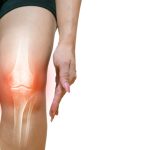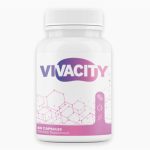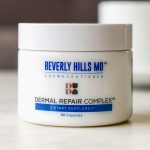What is Osteoporosis?
It's a disease that weakens bones and increases the risk of fracture, especially at the spine and hip. This means that bones are more likely to break – in some cases, with only minimal stress, such as coughing, sneezing, or turning over in bed. The hip bones can get so brittle that a fracture can occur spontaneously and cause a fall to the ground. It is frequently assumed that the fall caused the fracture but we now know it's sometimes the other way around.
Osteoporosis is the most common and serious health problem facing the post-menopausal woman. It keeps many women homebound, later even wheelchair-bound, and is one of the primary reasons an independent woman will finally succumb to nursing home admission. For an elderly woman a hip fracture can be devastating. About half will lose independence and much of the other half will have some impairment of mobility and reduced quality of life. The emotional effects can also be rather overwhelming for the patient and the family.
There are many common misconceptions about osteoporosis. It is not a disease only of the elderly. It often begins immediately after menopause and may progress silently for years until fractures occur.
Osteoporosis is not an inevitable part of aging. Some bone loss is normal as we grow older. But severe bone loss -osteoporosis- is a disease! A fracture is often the first sign of the disease and may provide the clue that leads to the diagnosis of osteoporosis. The disease may have been present for many years prior to the fracture thus, the first fracture may be followed by more as the disease continues to progress.
People often confuse osteoporosis with osteoarthritis. Osteoarthritis is a disease of joints, while osteoporosis affects bones.
Osteoporosis is a major national health problem, affecting more than 25 million Americans. The female population is at the highest risk: 80% of osteoporosis cases occur in women. You can also see that men are not immune from the disease. Osteoporosis affects 5 million American men: 1 out of every 5 cases are men.
Menopause, which occurs when the ovaries stop producing estrogen or are surgically removed, is the most common trigger for osteoporosis.
Risk factors for osteoporosis are listed on another page as are other important facts about the disease. You should be aware that low estrogen levels at other times than menopause cab have an effect on bone. Those who exercise excessively, such as young dancers and athletes, may have a very low body fat. Their bodies may not produce enough estrogen which can cause them to stop, or never start, menstruating regularly. This low estrogen level may affect bone development and these women may never achieve the peak bone mass they should. If a woman does not develop a healthy peak bone mass by age 25-30, whether due to poor nutrition, low estrogen, genetic factors, medications, or any other reason, they could be at risk for osteoporosis for the rest of their lives.
One of the best ways to combat osteoporosis is to prevent it from occurring in the first place. The following are ways you can try to prevent or delay the development of osteoporosis.
Estrogen replacement therapy (ERT) is probably the best preventative measure you can take after menopause. The benefits of ERT far outweighs it's risks. Therapy is individualized and the pro's and con's should be thoroughly discussed with your physician.
Calcium. Many women do not consume an adequate amount of calcium and will need calcium supplementation in addition to a healthy diet. The best supplement will contain magnesium in addition to vitamin D. Look for a supplement that contains calcium in the citrate form (calcium citrate). Encourage the young (teenage) women in your family to get enough calcium in their diet and supplement if necessary.
Exercise regularly. Especially “weight-bearing” activities such as brisk walking, running, tennis, Tai Chi and low-impact aerobics which are particularly good for your bones and can increase bone strength when done regularly. Your healthcare provider can advise you about the exercise program that's right for you.
Many postmenopausal women will develop osteoporosis despite following all of the above measures-even if she has no risk factors for the disease! One of the best ways to combat the disease is to diagnose it as early as possible so that appropriate therapy can be started. A bone density test is a fast, accurate, and painless way to help doctors diagnose osteoporosis, particularly in the early stages before there are any symptoms or broken bones.
Effective therapy for osteoporosis is now available by prescription only. The three main treatments include: hormone replacement therapy, calcitonin by injection or nasal spray, and a new drug taken by mouth FOSAMAX.
Discuss osteoporosis with your doctor.
Find out if you are at risk and if you need a bone density test. Many, but not all, insurance carriers will pay for the test if you are at risk for osteoporosis.
Discuss ways to take better care of your bones.
If you need treatment for osteoporosis, discuss your options and the risks / benefits of treatment.
Remember, no matter how old you are, it's never too early -or too late- to start taking care of your bones. They will love you for it!
Also, see Basic Facts about Osteoporosis, by Dr. Max Karrer, MD









